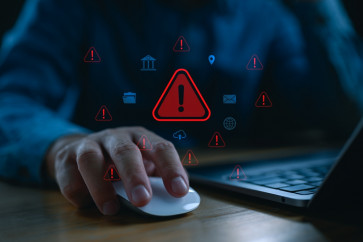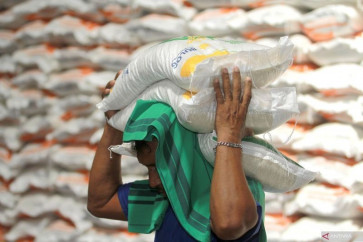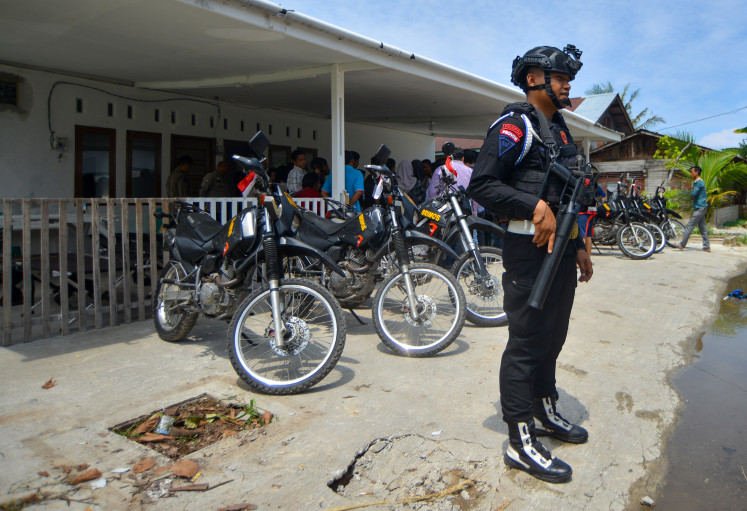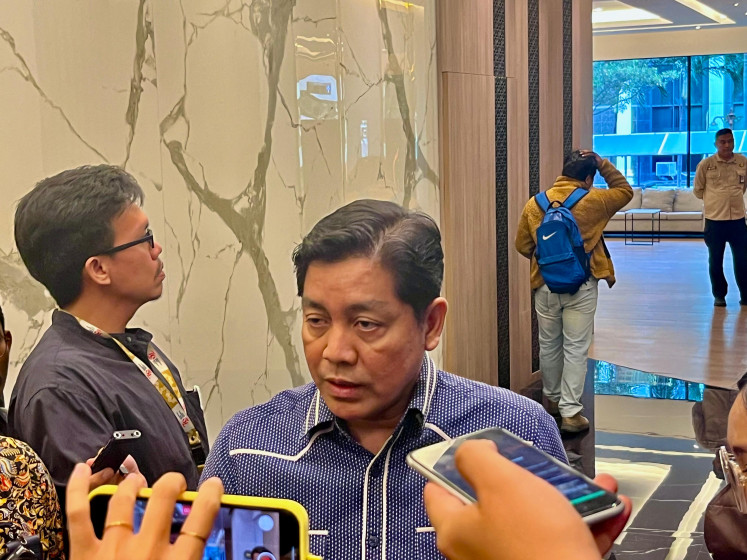Popular Reads
Top Results
Can't find what you're looking for?
View all search resultsPopular Reads
Top Results
Can't find what you're looking for?
View all search resultsAnalysis: E-money usage offers more benefits than cash-based payments
Electronic money (e-money) has become known to the public primarily for use in making small payments, yet there is a high frequency of such transactions
Change text size
Gift Premium Articles
to Anyone
Electronic money (e-money) has become known to the public primarily for use in making small payments, yet there is a high frequency of such transactions.
E-money can be classified into two major groups based on its technology, namely server-based (online) and chip-based (offline). Chip-based e-money, which takes the form of cards, is usually used in sectors in which transactions are quick, yet the frequency is high, like in transportation.
Server-based e-money, meanwhile, can only be used after the users connect the system to a publisher server and is usually used for online payment transactions through a web browser.
Numerous banks and non-bank financial institutions are starting to participate in issuing e-money. It has been predicted that e-money usage will be rising in accordance with increasing needs in daily life.
The development of e-money is very rapid. When it was first issued in April 2007, the amount of e-money in circulation was only 165,193 cards nationwide. However, 10 years later, it has reached 71 million as of September, an increase of 59.35 percent from the same month in 2017.
The volume of e-money transactions reached 68 million times by the end of September, with total value amounting to Rp 7.5 trillion (US$554.2 million). On average, e-money transaction volume in Indonesia reaches 61 million per month, showing that the payment tool continues to grow.
As of now, 25 e-money issuers have obtained permission from Bank Indonesia (BI).
Studies have shown that less cash usage is good for the economy as Visa Europe executive vice president Steve Perry says cash is expensive. Supermarkets are among business players who feel the need to eliminate cash from their systems so as to ease control of the flow of funds. The cost of cash can reach two-thirds their total expenses.
According to the Central Bank’s estimate, the annual cost of managing cash stands at 300 euros per family. Based on that reason, Bank Indonesia is trying to encourage e-money development to realize a less-cash society in the country.
E-money as a means of payment provides benefits of ease and speed for people to make transactions without the need to carry cash. However, e-money also has risks that its users need to address with caution. The first risk is that lost e-money can easily be used by anyone as it is principally similar to cash. Users cannot claim their lost e-money to the issuers.
In addition to that, people’s lack of understanding when using e-money may sometimes become an obstacle. Some users do not realize when their e-money has been scanned twice on the reader machines for the same transactions, causing more reduction to their balances than the value they should have paid.
The government has also started to use chip-based e-money, called the Prosperous Family Card (KKS), as a new way to distribute social assistance programs to its targeted families.
The non-cash social assistance card is expected to help increase the effectiveness of provision and reduce the amount of cash turnover in daily life.
As cash-based social assistance funds have been eliminated, the KKS comprises six programs that take the form of an “electronic wallet” with a total value of Rp 74.2 trillion this year.
As an example, the Family Hope Program (PKH) is almost 100 percent non-cash and the assistance is disbursed by beneficiaries. The Farmers Card program, meanwhile, enable farmers to save remaining funds from their harvest proceeds.
There are about four ministries that will provide the social aid through the KKS scheme, while the distribution of funds is a collaboration between the Association of State-Owned Banks (Himbara) and the government.
The KKS users automatically own bank accounts as it also serves as a debit card, which is expected to increase financial inclusion where communities are educated on banking literacy, while also fostering liasion between the government and the poor.
Receivers of the social assistance can conduct transactions with their cards using electronic data capture (EDC) machines in supporting networks, such as electronic warungs, kiosks of the State Logistics Agency (Bulog), bank agents and branches as well as ATMs.
Another benefit is that banks and the government can conduct real-time monitoring of the program as the card is used as e-money and is an enabler of a branchless banking program called Laku Pandai.
Laku Pandai is a program initiated by the Financial Services Authority (OJK) for banks to facilitate customers without having to open physical branches.
The increasing value of e-money every year will certainly reduce the amount of cash circulating, which will eventually affect the turnover of money and increase the gross domestic product (GDP). It is calculated in the concept of the velocity of money, which captures the average frequency of units of money spent in a given period of time associated with the money supply.
E-money transfer can shorten the time needed and automatically speed up the velocity of money. In this case, e-money is assumed as one of the factors that can change the function of money demand, which in turn can lower the average amount of cash held by the public.
In addition, e-money issuers should launch products that can operate in a standardized EDC system, thus users of e-money from different publishers can use them in any EDC machine.
_________________________________
The writer is an analyst at the Mandiri Institute.










